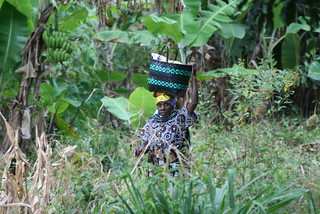Controversies linger over the drinking water project's impact, which could result in hard-to-manage algal blooms or gypsum crystals in the Dead Sea
 A planned pipeline would deliver water from the Red Sea (center below) to the inland Dead Sea (center) to stem its rapid disappearance. Image: NASA
A planned pipeline would deliver water from the Red Sea (center below) to the inland Dead Sea (center) to stem its rapid disappearance. Image: NASA
An ambitious plan to build a pipeline to carry water from the Red Sea to the shrinking Dead Sea lurched forward this month, after the World Bank held hearings to gather public comments on the proposal. But environmentalists charge that alternative plans to save the Dead Sea would be cheaper, more flexible and would have less impact on the region?s ecosystems.
If the project proceeds, a 180-kilometer buried pipeline will carry up to 2 billion cubic meters (m3) of sea water per year from the Gulf of Aqaba on the Red Sea through Jordanian territory to the Dead Sea.
The Dead Sea is world's lowest inland area. Proposals have been put forward to set up the pipeline so that the downward flow of the water goes through a hydroelectric plant that would in turn power a desalination plant, providing up to 850 million m3 of fresh water per year to the parched region. Brine from the desalination plant would be discharged into the already-saline Dead Sea, replenishing water that is evaporating from the lake at a rate of more than 1 meter per year.
The estimated cost of the project would be at least US$10 billion, of which about $2 billion would be for facilities that would pump the desalinated water from the Dead Sea towards Amman ? a distance of 200 kilometers, and a difference in altitude of 1,000 meters.
Public discourse
The World Bank in the past two weeks held public forums on the proposal in six cities across the three regions affected by the plan: Amman and Aqaba in Jordan; Eilat and Jerusalem in Israel; and Ramallah and Jericho in the Occupied Palestinian Territories. The meetings came after the publication last year of three major reports ? a feasibility study, an environmental and social assessment and a study of alternatives to the controversial project.
Alex McPhail, team leader for the World Bank's Red Sea?Dead Sea study program, presented the three reports at the cacophonous Jerusalem hearing. McPhail said that the environmental and social assessment, led by the Environmental Resources Management, an international consultancy, indicates that ?all potential major environmental and social impacts can be mitigated to acceptable levels? ? with one notable exception.
Studies indicate that if more than 400 million m3 of sea water is added to the Dead Sea, the body of water could be afflicted with algal blooms or the formation of gypsum crystals, with effects that could be difficult to predict. But that amount of water or more is needed to stabilize or raise the level of the Dead Sea.
The environmental outcome of mixing Red Sea water into the Dead Sea is one of the project?s biggest stumbling blocks, according to the conduit?s biggest opponent, Friends of the Earth Middle East (FoEME), which is headquartered in Amman.
Ways to water
FoEME favors exploring alternative ways of getting drinking water to the region and saving the Dead Sea. These include increasing water recycling and conservation by Israel and Jordan; importing water from Turkey; and desalinating sea water on the shores of the Mediterranean Sea or at Aqaba, then discharging the brine into the Dead Sea and pumping the fresh water directly to Amman.
Pumping desalinated Mediterranean sea water across Israel to Amman ?almost certainly would be cheaper? than pumping it across Jordanian territory, says David Meehan, team leader for the feasibility study. ?But my perception is that it would be hugely unpopular in Jordan. Basically Israel would control the tap on the water supply to Amman.?
Source: http://rss.sciam.com/click.phdo?i=658359d3b835e5e045e4ca71a827af8c
Hurricane Katrina Hurricane Isaac Path Isaac Hurricane earthquake san diego Hurricane Isaac Sam Claflin Tony Farmer



 ?Print Friendly
?Print Friendly  ?Wait. That?s a touchscreen?!? That wasn?t the first thought that popped into my head when I started to use the Chromebook Pixel -- it was about the tenth. But that?s only because it seemed impossible that a screen this nice could be a touchscreen. Of course, being that nice, comes with a price.
?Wait. That?s a touchscreen?!? That wasn?t the first thought that popped into my head when I started to use the Chromebook Pixel -- it was about the tenth. But that?s only because it seemed impossible that a screen this nice could be a touchscreen. Of course, being that nice, comes with a price.






















 iZettle ? what you might call the 'Square of Europe' given it's also a dongle-based mobile payment service for small merchants ? will now launch a new Chip & Pin device alongside its existing solution that currently uses a customer's signature to interact with the iZettle app. It will also now accept all major cards, including VISA. Until now iZettle has been unable to allow VISA transactions (there was a workaround but it was too complex), meaning many vendors were put off from using the payment dongle. The Chip & PIN reader will be available in Sweden, Norway, United Kingdom, Finland, Germany and Spain. The move comes amid rumours tha PayPal may be making a move into this space in the near future.
iZettle ? what you might call the 'Square of Europe' given it's also a dongle-based mobile payment service for small merchants ? will now launch a new Chip & Pin device alongside its existing solution that currently uses a customer's signature to interact with the iZettle app. It will also now accept all major cards, including VISA. Until now iZettle has been unable to allow VISA transactions (there was a workaround but it was too complex), meaning many vendors were put off from using the payment dongle. The Chip & PIN reader will be available in Sweden, Norway, United Kingdom, Finland, Germany and Spain. The move comes amid rumours tha PayPal may be making a move into this space in the near future.